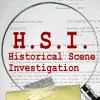Take a look inside 4 images
Historical Scene Investigation
Pros: Students take an active role in exploring historical events through primary-source investigation and interpretation.
Cons: Lessons are text-heavy, which may limit accessibility for ELL and struggling readers; activities lack interactive online capabilities.
Bottom Line: Useful resource for engaging students with primary sources and encouraging historical research and analysis.
Teachers should review the site to gain a better understanding of the instructional model and to search through the various cases to find relevant material for their classes. Cases aren't intended to cover the entire content of a unit, but rather provide the opportunity for an in-depth exploration of specific topics. The case on School Desegregation, for example, could be used during a unit on the Civil Rights Movement. That case asks students to analyze primary sources to describe the first few days of school desegregation.
Students would benefit from analyzing historical evidence in pairs or small groups to foster a collaborative approach to cracking these cases. Student buy-in may increase if teachers can develop an interactive online component in which students share ideas and clues as they conduct the investigation.
The Historical Scene Investigation Project provides teachers with resources to bring primary source research and analysis into the classroom. The project uses an instructional model that turns students into detectives as they investigate evidence, search for clues, and crack a case. Teacher and student views of the materials are provided. Teacher view includes teacher notes, standards, and, in some cases, suggested lesson plans. Students receive background information, links to relevant primary sources, and guided questions as they search to answer an overall question that helps them crack a case.
One of the cases, for example, focuses on the Boston Massacre: Students investigate whether justice was served in the trial of the British soldiers. Thirteen cases are available on the site, covering such U.S. history topics as the Civil War, the Constitutional Convention, Dropping the Bomb, and Lexington and Concord. Note that the links at the top of the home page don't work, but users can access all resources by selecting links at the bottom of the page.
With the transition to Common Core Standards, instructional resources like these are a valuable addition to a teacher's toolbox. The Historical Scene Investigation Project provides an effective model for the use of primary sources. Student interest in interpreting these primary sources should increase as they take on the roles of detectives in the investigation. However, when buried in the details, some kids may tire of the activities.
Nevertheless, the use of oral history accounts, journals, artifacts, works of art, and other historical evidence encourages students to compare different perspectives and draw their own conclusions about historical events -- and these are valuable skills. Cases include all primary sources as well as guided analysis questions to implement the lesson; however, the amount of teacher support in terms of specific lesson procedures varies from case to case. A lack of real mystery in the cases may frustrate students as they conduct their investigations.











